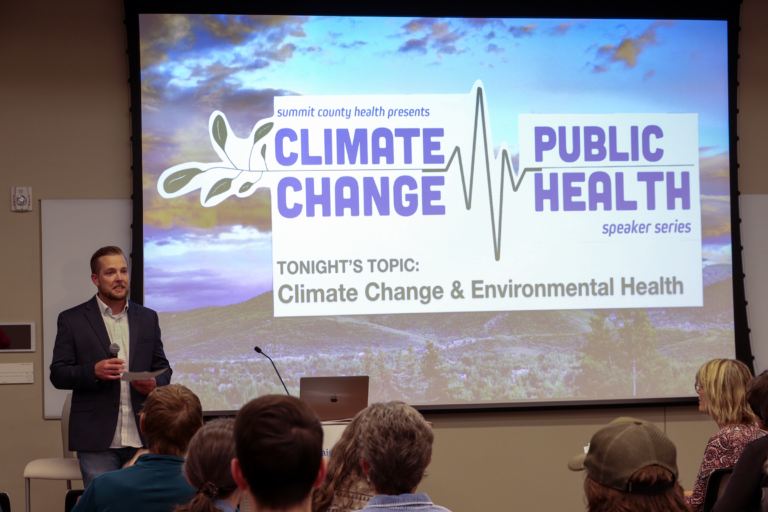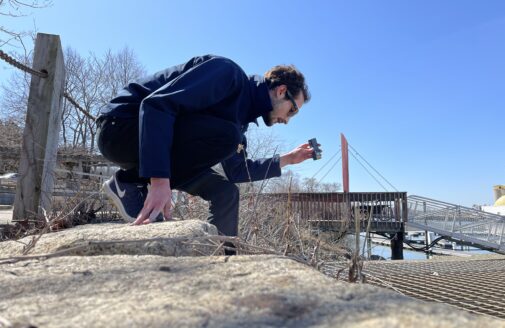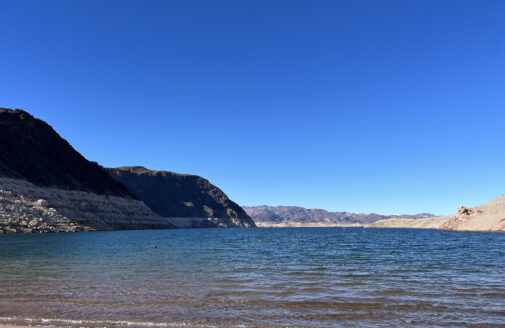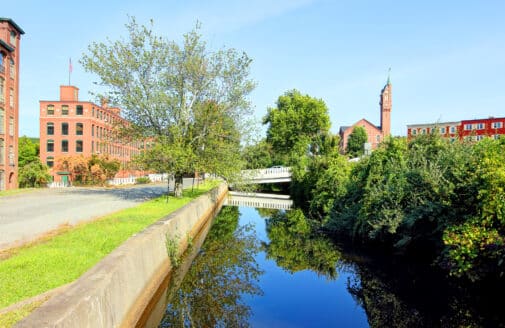For Summit County, climate is a public health priority
Woodwell Climate risk assessment propels public conversations

Along the Weber River near Oakley, Utah / photo by Tom Kelly (CC BY-NC-ND 2.0)
Summit County, Utah is preparing for a changing climate.
The high-elevation county boasts a strong winter sports economy, vast swaths of national forest and agricultural land, and a population of 43,000 people that stand to be affected by climate-driven changes. The risks to the county’s health and economy from climate change were outlined in a recent report by Woodwell Climate, and shared with the community through the first event in a series of climate change and public health panels.
The risk assessment was completed as a part of the Center’s Just Access initiative to provide free climate risk insights to municipalities across the globe, in order to equip them for the changes ahead. Working with members of Summit County’s Sustainability Department, as well as members of the community at large, the Woodwell team targeted three major climate risk variables for analysis—drought, water scarcity, and wildfire.
According to Emily Quinton, Sustainability Program Manager for Summit County, these risks are ones the county is already concerned about, based on existing conditions, but wanted to know what that would mean for them in coming decades.
“We have some good baseline knowledge about the risks we are facing already,” Quinton said. “What was different and new that the Woodwell assessment could offer was those much longer-term future projections.”
In Summit County, the Sustainability Department is a subset of the Public Health Department, which encouraged the risk assessment to delve into the ways in which climate risks affect the health of county residents. Changes in water availability were a particular concern for the department.
The report found that the northern and easternmost portions of the county are most likely to be affected by drought. Summit County is already experiencing severe drought conditions 40% of the year; that number is expected to increase to 50% by midcentury.
Water scarcity will also increase. Driven by both increasing demand from the population and decreasing availability, water scarcity in most communities within Summit County is expected to be at 189% by 2030—meaning demand will be nearly twice that of available supply.
“With the drought and water scarcity topics,” said Quinton, “making the connection between how a decrease in water quantity will place risk on water quality was important. Monitoring water quality is a really crucial responsibility of the Public Health Department.”
Woodwell Research Assistant, Darcy Glenn, who worked previously in Summit County’s Sustainability Department and helped facilitate the production of the report says, “If you don’t have any water in your wells, water quality goes down because you don’t have enough to dilute any contaminant that might be a problem.”
Summit County currently grapples with wildfire threat as well. Wildfire danger days— in which temperature and moisture conditions make fires more likely to burn out of control— will become a more common occurrence, leading to fires that cause more evacuations, damage, and air quality concerns. The majority of the county will add eight or more wildfire danger days to their year by the end of the century.
Climate change and public health
Public health can be a less polarizing context in which to discuss climate risks publicly. Despite the political nature surrounding climate change in some regions, Glenn notes public health can serve as a lens most people relate to and take seriously.
“It can be hit or miss on climate change, but if your kid has asthma, you want to know about your air quality. Changes in the environment, whether people acknowledge climate change or not, align with things they’ve seen,” says Glenn. “So we’re trying to approach the topic in a way that’s accessible and start a conversation that’s welcoming to the whole community.”


Darcy Glenn (right) speaks at panel event in Summit County, UT.
photos by Bailey Edelstein
After the completion of the assessment, Woodwell Risk team members presented the information to the Summit County Board of Health, then opened up communications with the public. In May, the county’s Health Department hosted the first of three planned events in a speaker series, focused on sharing the results of the report to help county residents better understand the extent of risk where they live. Glenn spoke alongside local climate experts and took questions from attendees.
The next two events in the series will discuss the physical and mental health impacts of climate change, as well as some potential adaptation solutions. According to Quinton, these events will aid the county in developing plans for resilience that address the top concerns of the public.
“Climate preparedness can’t happen without an understanding of what the potential risks are. The Climate Risk Assessment and the public events feel like important steps to more directly integrate climate change into the preparedness work Summit County is already doing,” says Quinton.











